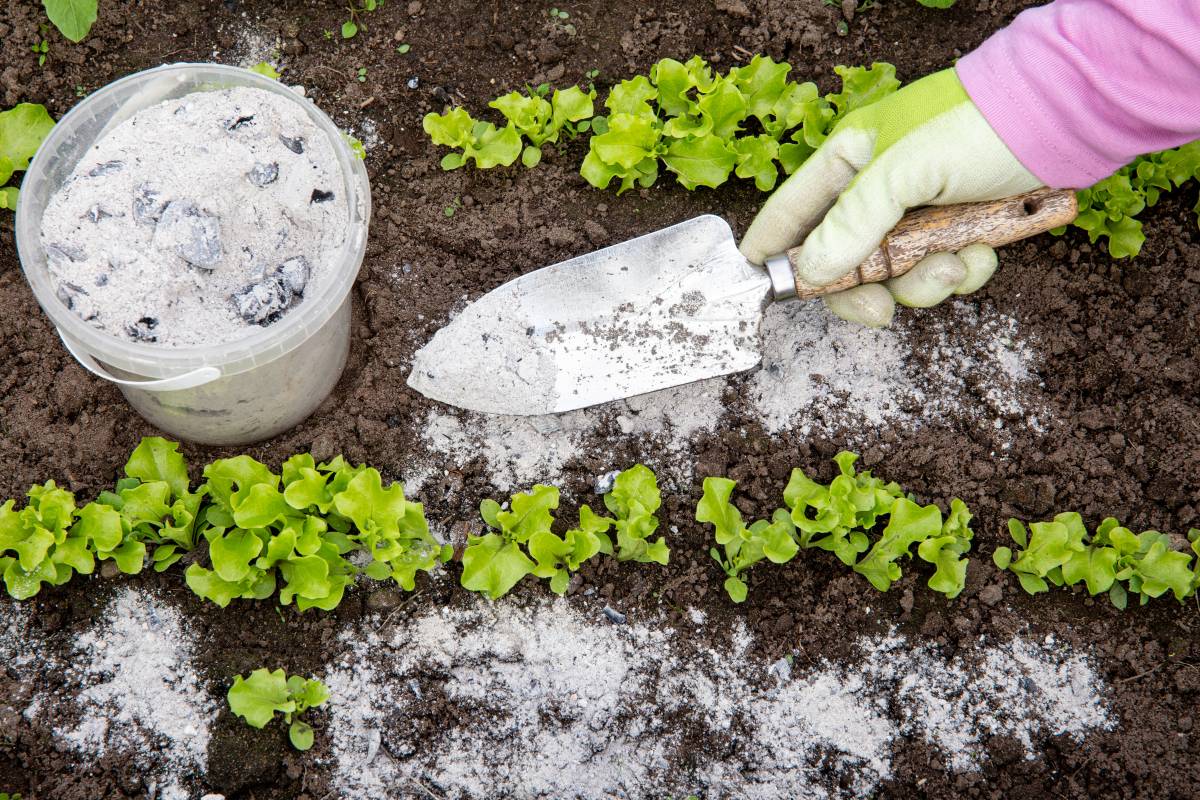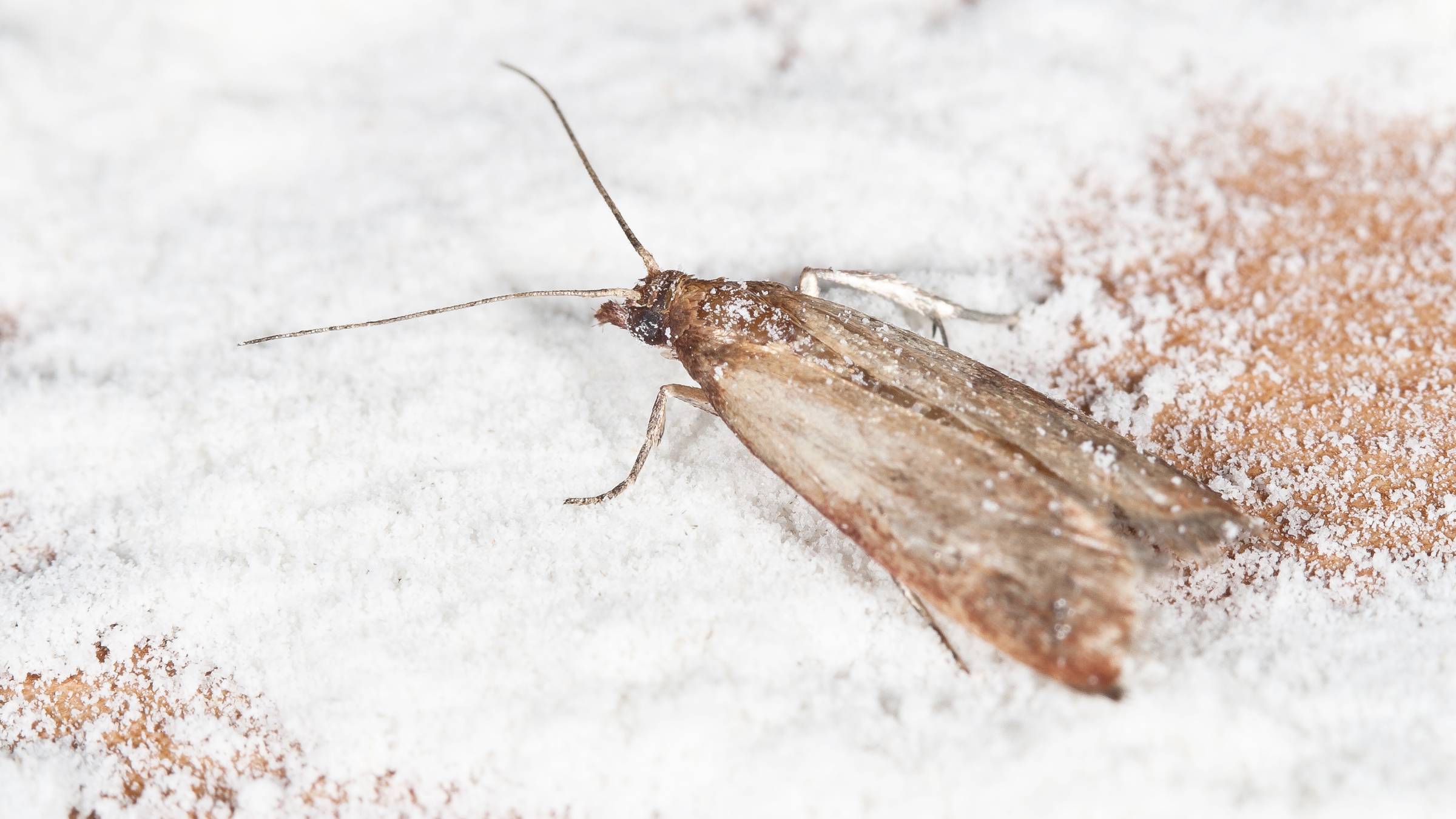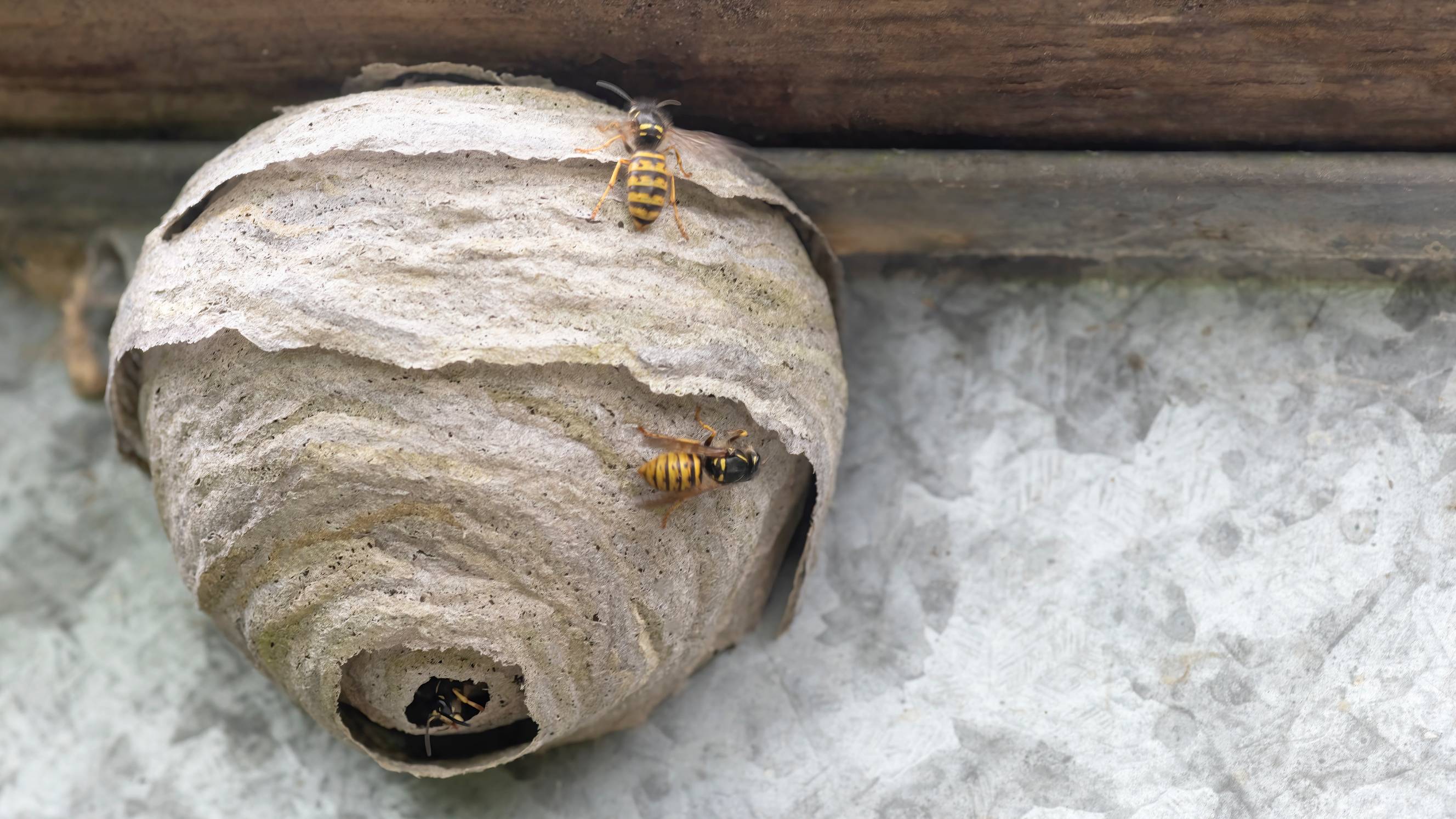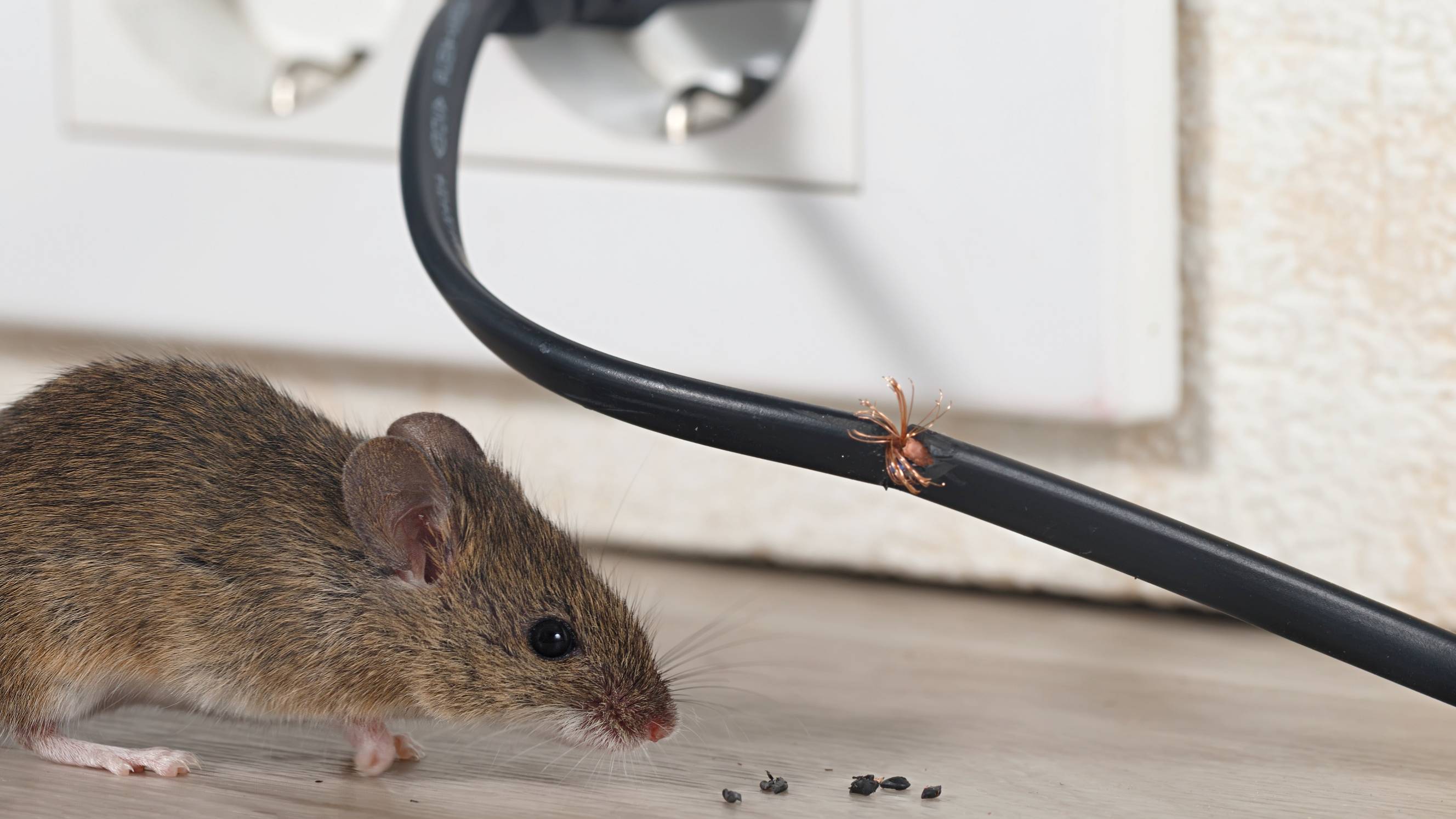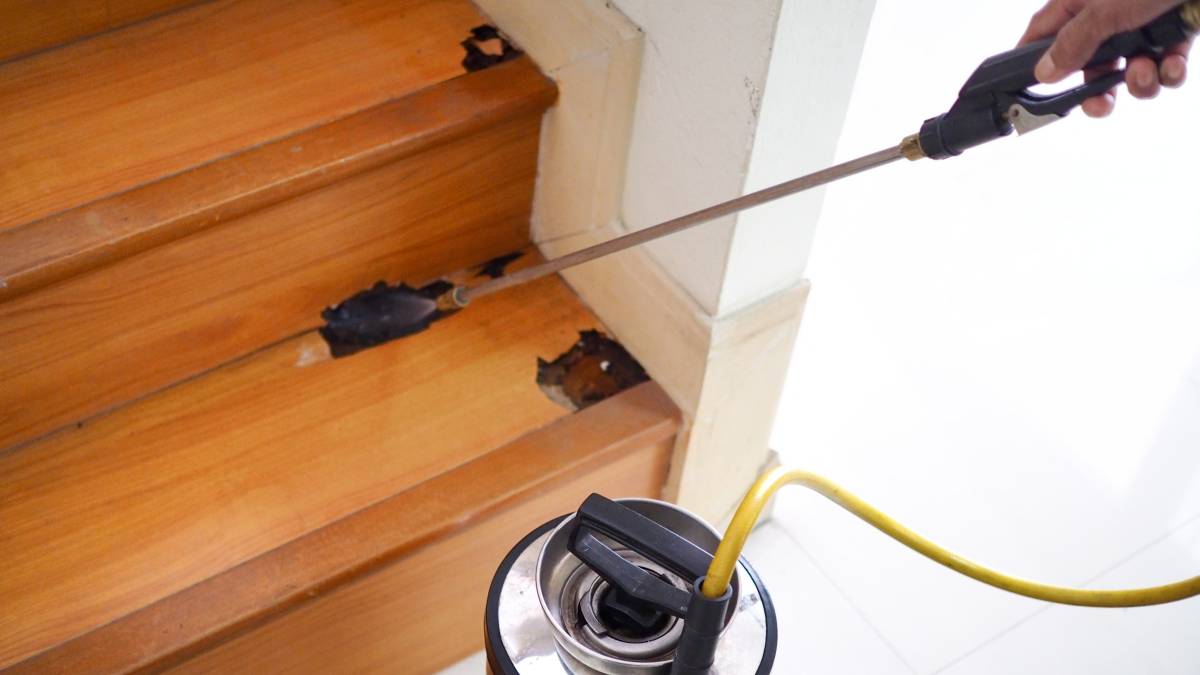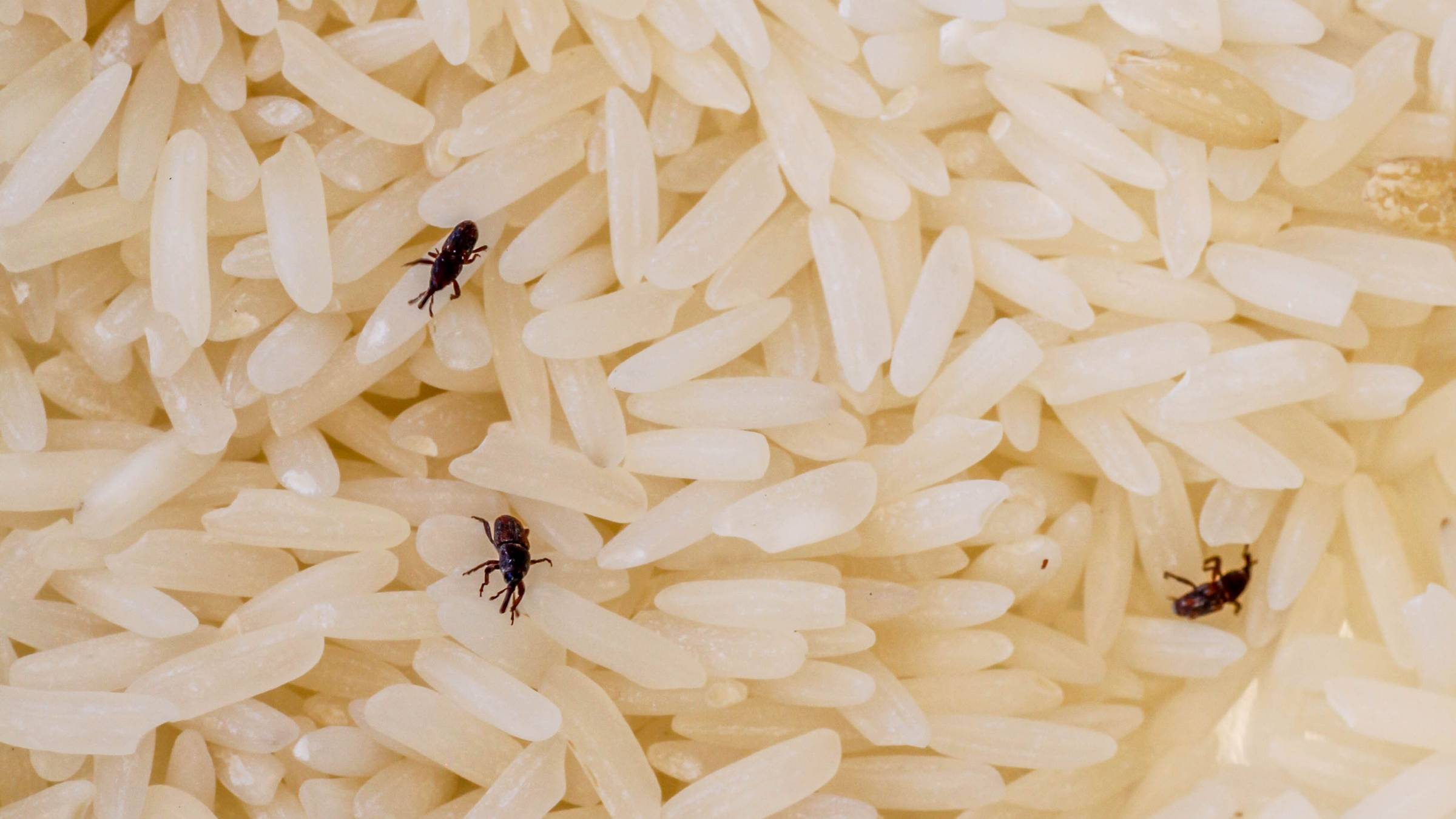
- Home/
- Guides/
- Pest Control/
- How to Get Rid of Weevils
How to get rid of rice weevils effectively
Learn step-by-step methods to eliminate rice weevils and keep your dry goods safe.
Last Updated on

Written by Angela A.
Staff Writer
Read more about our contributor
|
Skill level |
Estimated completion time |
Estimated cost |
|---|---|---|
| Beginner—no special tools or experience required |
Between a couple of minutes and a few days |
No cost if using products already found in your home |
Key Takeaways
Pantry weevils are small beetles that infest and feed on stored dry foods like flour, rice, pasta, and grains.
Weevils start causing problems in homes because they contaminate stored food with their eggs, larvae, and waste, making it unsafe for homeowners to eat.
To prevent them from causing further harm, keep dry goods in sealed containers instead of their original packaging.
Weevils are small but frustrating pests that infest dry foods like rice, flour, and pasta. They often go unnoticed until they appear in your pantry. Curious to know what causes weevils in the pantry? These pests can enter your home through contaminated food or find their way in from outside. If not dealt with quickly, they multiply fast and become hard to remove.
This guide will show you how to get rid of rice weevils using natural methods. With proper cleaning and food storage, you can protect your kitchen from these pests.
What are weevils and are there different types of weevils?
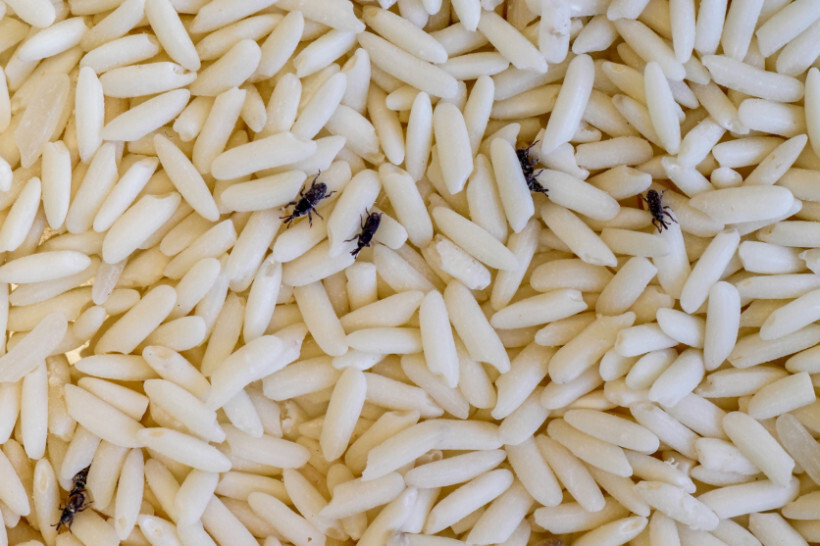 Infested dry goods like rice should be discarded immediately to prevent spreading. (Source: iStock)
Infested dry goods like rice should be discarded immediately to prevent spreading. (Source: iStock)
Unlike other pests, like termites and cockroaches, weevils are especially unpleasant to see in your pantry or kitchen because they don’t just eat food—they live in it. They burrow into grains, lay their eggs inside, and turn your stored food into both a home and a feeding ground for their larvae. It’s also why they are dangerous because there might be weevils inside your stored food, and you wouldn’t know it.
There are many kinds of weevils, but the ones found in rice and flour are the most common in homes. Because they are so small, they can be hard to spot at first.
These reddish-brown insects, about 2.5–3.5mm long, burrow into grains to lay eggs. The larvae feed on the food, often making infestations hard to notice until the damage is done. By the time you see adult pantry weevils, they may have already spread to other food items.
Signs of a weevil infestation in your home
Weevils can be hard to notice at first, but catching an infestation early can prevent it from spreading. Watch out for these warning signs:
Presence of small brown or black beetles in or around pantry shelves and food containers.
Tiny holes in food packaging might signal weevil or larvae activity in your dry food storage.
Infested grains often leave behind a dusty or fine powdery residue in food containers.
Larvae can cause flour and grains to clump together or develop silky webbing.
The presence of other insects near dry food may indicate a wider infestation.
Contaminated grains or flour that have developed a musty or stale smell.
Stored grains may appear different or discolored if they’ve been infested.
How to get rid of weevil bugs
Weevils spread quickly in kitchen pantries, but you can get rid of rice bugs and prevent them from coming back with these simple steps.
Step 1: Find the source
 Organising pantry items in sealed containers helps prevent weevil infestations from spreading. (Source: iStock)
Organising pantry items in sealed containers helps prevent weevil infestations from spreading. (Source: iStock)
Before removing weevils, you need to locate their source. Check all dry food—grains, rice, flour, pasta, and dried fruits—for live insects, webbing, or powdery residue.
Look for signs of infestation in cracks, behind appliances, and inside storage areas. You should also inspect both opened and unopened packaging for live insects, webbing, or fine powdery residue. If you notice damaged packaging or visible pests, you likely have a weevil problem.
Step 2: Immediately remove infested food
Once the source has been identified, you should immediately remove the infested food or packaging from your food storage area.
Isolate and throw away contaminated food in an outdoor trash can. Avoid composting infested grains, as eggs and larvae may survive and infest further. Before restocking, inspect nearby food to make sure they’re both safe and clear of weevils.
Step 3: Thoroughly clean and disinfect
 Cleaning shelves thoroughly is a key step to removing pantry weevil eggs and larvae. (Source: iStock)
Cleaning shelves thoroughly is a key step to removing pantry weevil eggs and larvae. (Source: iStock)
Remember to give your pantry a thorough deep clean to eliminate any remaining weevils or eggs, as some may have remained or spread to other parts of your storage area. Remove the rest of your food items and vacuum the pantry shelves, corners, and crevices to clear out hidden eggs and larvae.
Wipe surfaces with a mix of white vinegar and water. Vinegar is great for cleaning and deterring weevils. After cleaning the affected areas, let the shelves dry completely before restocking.
Bay leaves or cloves can also help repel weevils, and they’re also great for getting rid of pantry moths, termites, and other pests.
Step 4: Check other hiding spots
After eliminating the weevils in your food storage space, be sure to always inspect other areas where they might be hiding. Check pet food, seed bags, dried flowers, space behind appliances, and rarely used storage areas.
To be safe, consider carrying out a full house clean to remove any hidden pests. Vacuum carpets, clean storage spaces, and inspect any rarely used areas where dry goods may be kept.
Step 5: Practice proper food storage
 Using airtight glass containers helps block weevils from getting into your pantry staples. (Source: iStock)
Using airtight glass containers helps block weevils from getting into your pantry staples. (Source: iStock)
To avoid future infestations, aim to practice proper food storage. For example, keep dry goods in airtight glass, plastic, or metal containers instead of thin packaging that weevils can chew through.
When shopping for new products or restocks, always inspect the food and its packaging to make sure it’s sealed tightly. Once at home, label containers with purchase dates to track usage and expiry.
Natural ways to remove rice weevils from your kitchen
If you want to eliminate weevils without using chemicals, there are simple methods to do so. These natural solutions not only help with killing weevils in the pantry but also make your kitchen less inviting to them in the future.
Clean with vinegar
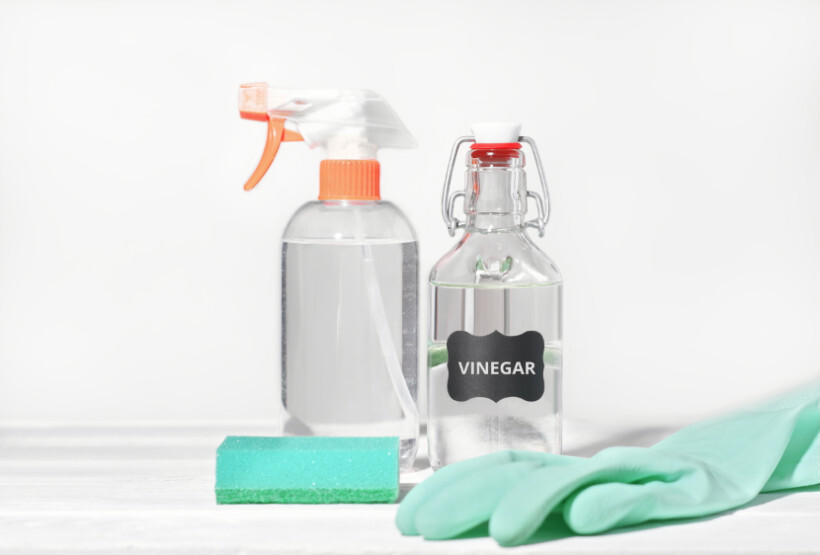 Vinegar is a safe and natural disinfectant to clean pantry surfaces after an infestation. (Source: iStock)
Vinegar is a safe and natural disinfectant to clean pantry surfaces after an infestation. (Source: iStock)
Vinegar is a natural disinfectant that helps eliminate weevils and sanitize storage spaces. Start by mixing equal parts white vinegar and water in a spray bottle and use the solution to clean shelves and other areas where you store your food products.
Use high heat or freezing temperatures to kill weevils instantly
To save lightly infested dry goods, place them in the oven at 60°C (140°F) for 15–20 minutes to kill adult weevils. This method is great for cleaning dry food, but targeting unhatched eggs may require more work to exterminate.
Repeating the process may be necessary for bigger infestations. In addition, freezing food for at least 24 hours is more effective, as it eliminates weevils at all life stages.
Make the most of natural repellents for added protection
 Aromatic spices like bay leaves and cinnamon may help repel pantry pests naturally. (Source: iStock)
Aromatic spices like bay leaves and cinnamon may help repel pantry pests naturally. (Source: iStock)
Bay leaves, cloves, and black peppercorns can naturally deter weevils. Place them in food storage containers or on shelves to keep flour pantry weevils and other pests away. Replace them every few months for continued protection.
Common mistakes to avoid when dealing with pantry weevils
After eliminating a weevil infestation, you might still be worried about them returning. To prevent future outbreaks, be sure to avoid the following:
Not checking all dry food items. Weevils spread fast, so throwing out one infested package isn’t enough. Always inspect all dry goods, including unopened packages, to catch hidden infestations.
Skipping the cleaning step. Just removing infested food won’t solve the problem. Eggs and larvae can linger in pantry corners and shelves. After experiencing weevils and other pests in your home, a deep clean, including vacuuming and disinfecting, is recommended.
Reusing infested containers. Even if a container looks clean, it may still contain weevil eggs. Wash all storage containers thoroughly with hot, soapy water before reusing them to prevent another infestation.
Ignoring cracks and crevices. Weevils can hide in tiny spaces, such as shelf cracks, baseboards, and even behind appliances. Pay close attention to these areas when cleaning to eliminate any hidden pests.
Not doing regular inspections. A single infestation can quickly return if you’re not careful. Check your pantry regularly, rotate food supplies, and store dry goods in airtight containers to stop weevils from coming back.
A weevil-free pantry starts here!
Having weevils in your house can be a headache for many homeowners, but there are several ways to stop infestations and minimize the chances of them coming back. Keeping your pantry clean, inspecting food regularly, and storing dry goods properly are great avenues to start in.
If you discover weevil in your flour or other pantry staples, discard the contaminated food immediately. And if you need extra help, Airtasker connects you with different pest control services that can quickly and effectively handle the issue, so you can enjoy a clean, pest-free kitchen.
Learn more about our contributors

Written by Angela A.
Staff Writer
Angela Apolonio is an experienced writer with a Biology background. She writes about home tips, car upkeep, gardening hacks, and food facts, bringing a unique blend of science and practicality to her work. As a wife and a mother, she knows the value of iron-clad routines, so she's passionate about sharing what works for her with everyone else. She loves making everyday life simpler and helping readers find fresh ideas to bring more joy into their spaces.
FAQs on pantry weevils
Yes, weevils are common in American homes. They can enter through infected food products and multiply quickly if not addressed.
Yes, weevils can be found in organic and bulk bin foods, which often have minimal preservatives and are stored in open or loosely sealed containers. Bulk bins are especially vulnerable because multiple people handle the food, increasing the chances of contamination.
If the food was already infested before sealing, weevils can hatch and develop inside vacuum-sealed bags. However, they cannot chew through thick plastic or create new openings, so properly vacuum-sealed food is generally safe from new infestations.
While pantry weevils primarily infest dry food storage areas, they can spread to other rooms by hiding in cracks, crevices, and even packaging. If left unchecked, they may migrate to other food sources or even lay eggs in hidden areas.
Find pest control experts, fast
Find pest control expert
Related articles
Related price guides
